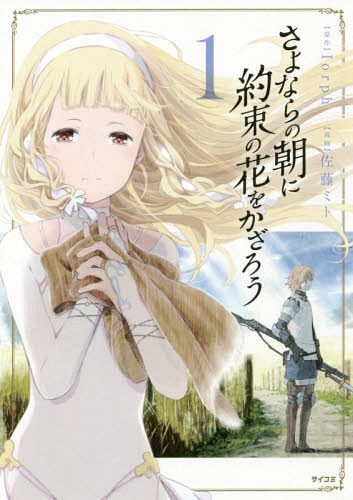
Sayonara no Asa ni Yakusoku no Hana wo Kazarou (Maquia: When the Promised Flower Blooms) is Mari Okada’s debut as a director. Formerly, she was known for her series composition (concept writer for a series) and script writing/screenplays. As a writer, she has an astute understanding of how to use time--how it influences both delivery of dialogue and the understanding of a concept.
Sayounara no Asa ni Yakusoku no Hana wo Kazarou (Maquia: When the Promised Flower Blooms) is a story that tells truth through fantasy. Its excellent visuals weave a tapestry that viewers can understand, one connected by the characters, story, and empathy.
For this article, I will assume you’ve already seen the movie (spoilers ahead), as I’ll be citing some scenes to help illustrate my examples. For this article, we will discuss how Maquia uses visual cues to help viewers understand the characters, time, and story.
The Physicality of the Body: Time Told Through Age

Utilizing a circular story, the film emulates the revolving nature of life, war, and the roles people play. During this 2-hour film, the story tells about the beginning and end of two wars, the rise and fall of nations/people, the understanding Maquia makes as she connects to others, and the lifespan of a child as he grows and eventually dies.
Given the scope of the film, time is a precious resource used to impart information and influence a scene’s delivery. Thus, there are several visual decisions to ease one’s understanding without exposition. One such example is the character design.
The younger a character is in the film, the less pronounced their facial features. Not only is this logical (as they have not fully developed), the more circular face and the lack of a pronounced nose are physical traits that help identify the aging of characters. This is important because the movie does NOT state the passage of time.
Similarly, hair length and its color air your understanding of time. Adults who started the war have their hair gray. Maquia who dyes her hair orange to match her adopted son has its orange hue fade as the second war begins.
Fabric Weaves a Story: Character Outfits and Character Arcs
In the film, a character's outfit indicates the passage of time. As characters move from different countries (or cities), their dress changes in accordance with the customs. In particular, the contrast between a character’s outfit early on in the film and what they wear later shows the arc of their growth.
The white gowns of the Iorph (traditional, innocent, and fantasy-esque) change near the end, providing a visual cue for a character’s development. Krim, the Iorph who is separated from his lover, wears the same outfit in the beginning as the end. He has not tried to understand human life--in fact, contrast to his innocent outfit, he’s grown more bitter, hoping to destroy the country that made him suffer.
Leilia, Krim’s former lover and Mezarte’s new princess, is shown in a red, conservative dress. While she is the “princess” of Mezarte, her position is hardly luxurious. Rather, she is more of a prisoner and trophy of war. Compared to her innocence before, she takes command at the end of the movie, refusing to go with Krim, her former lover. She is now a mother, she states. The one thing that saved her all those years in her prison was her daughter. It’s for that reason she stays despite the pain, her red dress a symbol of her ideals.
Establishing Shots and Walking Scenes
The next set of visual cues are through establishing shots, shots from far away meant to establish where (and ideally) when an action takes place. When the movie introduces the Renato, a race of ancient dragons that gives Mezarte its military power, the film has an establishing shot from afar. Routinely the movie will return to this shot in order to indicate time passing. Their death to the Red Eye Disease is like a ticking bomb. Once it goes off, war explodes once again.
Since time is limited and the story wants to cover a lot, walking scenes serve a multitude of roles. First, they exist to show a transition from one place to another. Second, they establish character intentions--generally characters will speak about the topic of why they are leaving. Lastly, they create a better perspective on how one character sees another (sometimes quite explicitly). One example is before Maquia leaves the village. As she walks through a dark alley, brooding about her uncertain future, she sees a child come from atop the slope, covered in the light of sun--her son.
Final Thoughts

Maquia: When the Promised Flower Blooms can be hard to follow with its quick pacing and little exposition. Fortunately, Mari Okada understands how to optimize her time. By emphasizing multiple visual cues through character physical traits, outfits, and establishing scenes, the viewer has ample opportunity to notice story details without the need of slowing down the film’s pace.

